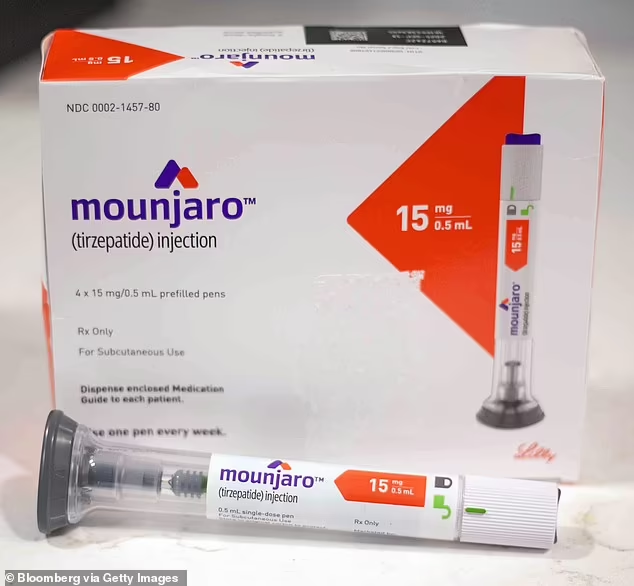5 Habits Fueling Belly & Visceral Fat
In today’s health-conscious world, discussions around body composition often focus on visible fat. However, a less visible but far more dangerous type of fat, known as visceral fat, poses significant health risks.
Both general belly fat and, more specifically, visceral fat, are closely linked to a range of severe health conditions. Dr. Tran Duc Canh, Deputy Head of the Endoscopy and Functional Investigation Department at K National Center Hospital, emphasizes this critical connection, explaining that “both belly fat and visceral fat are closely linked to metabolic and cardiovascular diseases.”
Visceral fat is not merely the fat you can pinch around your midsection. It is the deep-seated fat that actively surrounds your internal organs, enveloping vital components such as your liver, stomach, and intestines. This internal fat is metabolically active, releasing inflammatory compounds and hormones that can disrupt normal bodily functions.
The accumulation of both visible belly fat and this hidden visceral fat is far more than just an aesthetic concern. It represents a significant risk factor for a litany of serious health conditions, including the alarming rise of type 2 diabetes, various forms of cardiovascular disease (such as heart attacks and strokes), and even certain types of cancers. This makes understanding its causes and implementing preventative measures absolutely crucial for long-term health.
The primary drivers behind the buildup of this dangerous fat are largely rooted in our daily lifestyle choices. Modern living often encourages patterns that inadvertently promote fat accumulation. These include consistently poor eating habits, a chronic lack of physical activity, and unmanaged psychological stress. Recognizing these contributing factors is the first step toward addressing the problem. Here, we delve into five common habits that significantly contribute to the development and persistence of both belly fat and the more insidious visceral fat.
1. Unhealthy Eating Habits: The Foundation of Fat Accumulation
The adage “you are what you eat” holds profound truth when it comes to fat accumulation, particularly around the midsection and internal organs. A dietary pattern characterized by a high intake of processed foods, refined sugars, and fast food stands as one of the leading culprits in the development of both belly fat and visceral fat. These types of foods are almost universally high in calories, providing excessive energy without delivering essential nutrients or dietary fiber.
When calorie intake consistently exceeds the body’s energy expenditure, the surplus energy must be stored. This surplus energy is efficiently converted into fat, with a significant proportion being directed towards visceral fat deposits. Processed foods, in particular, are often laden with saturated and trans fats, which not only contribute directly to fat storage but also have a detrimental impact on metabolic health. High consumption of these unhealthy fats can lead to increased insulin resistance, where the body’s cells become less responsive to insulin. This in turn prompts the pancreas to produce more insulin, a hormone known to promote fat storage, especially in the abdominal area.
Beyond the composition of food, the timing and size of meals also play a critical role. Eating late at night or consistently consuming large, heavy meals in the evening significantly encourages fat storage. The human body operates on a natural circadian rhythm, an internal clock that regulates various physiological processes, including metabolism. Metabolism naturally slows down as the day progresses and prepares for rest, making it easier for excess calories consumed late in the evening to be stored as fat rather than being burned for energy.
Moreover, late-night eating can disrupt the body’s natural sleep cycles and interfere with the quality of sleep. Poor sleep, as we will explore further, can lead to hormonal imbalances that increase hunger cravings the following day, perpetuating a vicious cycle of overeating and fat accumulation. Breaking this cycle requires not just choosing healthier foods but also being mindful of when and how much we eat.
2. Sedentary Lifestyle: The Cost of Inactivity
In an increasingly desk-bound world, a sedentary lifestyle has become a pervasive habit, with severe implications for body composition and overall health. Spending extended periods sitting, common in many office jobs or during leisure time spent in front of screens, directly contributes to fat accumulation. When physical activity is minimal, the number of calories burned is significantly lower than the calories consumed through diet. This fundamental imbalance leads to the storage of excess calories, primarily as visceral fat and general belly fat.
Beyond the simple calorie imbalance, a consistent lack of physical activity also directly lowers an individual’s metabolic rate. The metabolic rate is the speed at which your body converts stored energy into usable energy. A slower metabolism means fewer calories are burned at rest, making it easier for fat to accumulate even with moderate food intake.
Furthermore, a sedentary lifestyle has a detrimental effect on cardiovascular health. Regular physical activity strengthens the heart, improves blood circulation, and helps maintain healthy blood pressure and cholesterol levels. Without it, the risk of cardiovascular diseases escalates, creating a dangerous combination with the accumulation of visceral fat. Engaging in even moderate amounts of daily physical activity is crucial to counteract the negative effects of prolonged sitting and to boost metabolism, thereby reducing the risk of fat buildup and associated health complications.
3. Lack of Sleep: Hormonal Imbalance and Cravings
Sleep is not merely a period of rest; it is a critical physiological process that plays a profound role in regulating numerous bodily functions, including metabolism and appetite. Chronic lack of sufficient sleep can severely disrupt the delicate balance of hunger hormones, specifically ghrelin and leptin, leading to increased fat accumulation.
Ghrelin is often referred to as the “hunger hormone” because it stimulates appetite. When sleep-deprived, the body’s ghrelin levels tend to increase significantly, sending powerful signals to the brain that it’s time to eat, even when caloric needs have been met. Conversely, leptin is the “satiety hormone” or “appetite-suppressing hormone,” which signals to the brain that the body has enough energy and can reduce hunger. Insufficient sleep often leads to a decrease in leptin levels, diminishing the body’s natural ability to feel full and satisfied.
As a direct result of these hormonal imbalances, sleep-deprived individuals are far more likely to feel persistently hungry and consequently tend to eat more throughout the day. Crucially, they often gravitate towards calorie-dense, low-nutrient foods—comfort foods rich in sugar, unhealthy fats, and refined carbohydrates—to seek quick energy boosts. This combination of increased hunger, reduced satiety, and poor food choices creates a perfect storm for the accumulation of belly fat and visceral fat. Prioritizing 7-9 hours of quality sleep per night is therefore not just about feeling rested but is a fundamental pillar of weight management and overall metabolic health.
4. Chronic Stress: The Cortisol Connection
In modern life, stress is an inescapable reality for many. However, chronic stress, if unmanaged, can have profound and detrimental effects on body composition, specifically promoting the accumulation of belly fat and visceral fat. When the body experiences stress, it activates its “fight or flight” response, releasing a cascade of hormones, most notably cortisol.
While cortisol is essential for managing short-term stress, chronically elevated levels due to persistent stress become problematic. High cortisol levels are known to trigger appetite, often leading to cravings for high-fat, high-sugar “comfort foods.” These foods provide a temporary sense of pleasure or relief, but contribute directly to calorie surplus.
More importantly, cortisol directly promotes fat storage in the body, particularly in the abdominal area. This preferential fat deposition around the midsection is a well-documented physiological response to chronic stress, making individuals appear to gain weight specifically in their belly, even if their overall weight gain isn’t dramatic.
The fat stored as a result of elevated cortisol levels is primarily concentrated in the visceral area, surrounding vital organs. This increased visceral fat significantly heightens the risk of developing cardiovascular diseases and type 2 diabetes. Managing stress through techniques like mindfulness, meditation, regular exercise, or seeking professional help is not just beneficial for mental well-being but is also a critical strategy for preventing dangerous fat accumulation and protecting long-term health.
5. Excessive Alcohol Consumption: The “Beer Belly” Effect
Alcohol, while often enjoyed socially, contributes significantly to fat accumulation, particularly around the abdomen. It is a source of “empty calories,” meaning it provides caloric energy but offers virtually no nutritional value in terms of vitamins, minerals, or fiber. When consumed in excess, these empty calories add to the overall daily calorie intake without providing satiety, making it easy to consume more calories than needed.
Beyond the caloric content, excessive alcohol consumption also directly impacts metabolism. The liver prioritizes processing alcohol, as it’s seen as a toxin. This metabolic focus means that the breakdown of fats and carbohydrates is slowed down or put on hold. Consequently, the body is less efficient at burning fat for energy, leading to increased fat storage. This fat storage is particularly pronounced in the abdominal area and around internal organs, directly contributing to the accumulation of visceral fat. This phenomenon is colloquially known as a “beer belly,” though it can result from excessive consumption of any type of alcohol, not just beer.
Furthermore, alcohol can disrupt sleep patterns and lead to poor food choices due to impaired judgment and increased cravings for unhealthy foods the day after consumption. Identifying and limiting excessive alcohol intake is therefore a crucial step in preventing the accumulation of belly and visceral fat, and in turn, reducing the risk of numerous associated health complications.
Taking Control: Addressing Unhealthy Habits
The accumulation of belly fat and visceral fat represents a serious and often underestimated health concern. It is not merely an aesthetic issue but a significant contributor to various chronic diseases that can severely impact an individual’s quality of life and longevity. Conditions like type 2 diabetes, heart disease, certain cancers, and metabolic syndrome are all directly linked to excessive visceral fat.
The good news is that the habits contributing to this fat accumulation are largely within our control. By consciously identifying and actively addressing these detrimental lifestyle choices—namely, unhealthy eating patterns, a sedentary lifestyle, insufficient sleep, chronic stress, and excessive alcohol consumption—individuals can take proactive steps to prevent these health risks.
Implementing sustainable changes in these areas can lead to a significant reduction in belly and visceral fat, resulting in improved metabolic health, reduced disease risk, and a substantially better overall quality of life. Embracing a balanced diet, incorporating regular physical activity, prioritizing adequate sleep, managing stress effectively, and moderating alcohol intake are fundamental pillars for long-term well-being and a healthier body composition.






